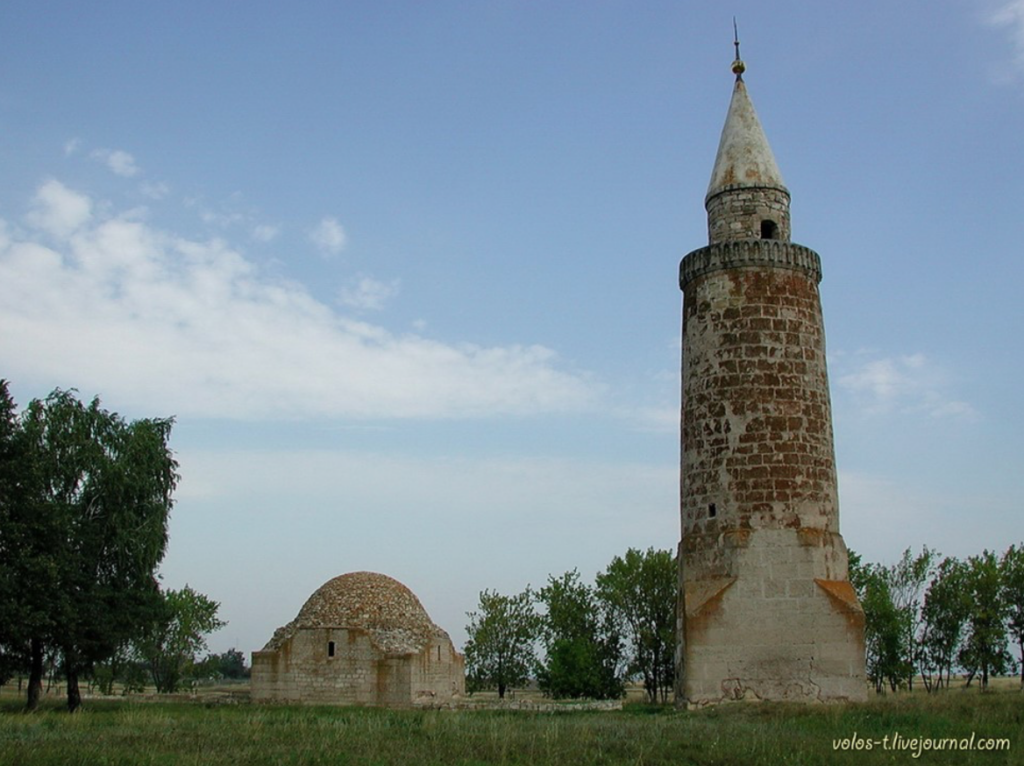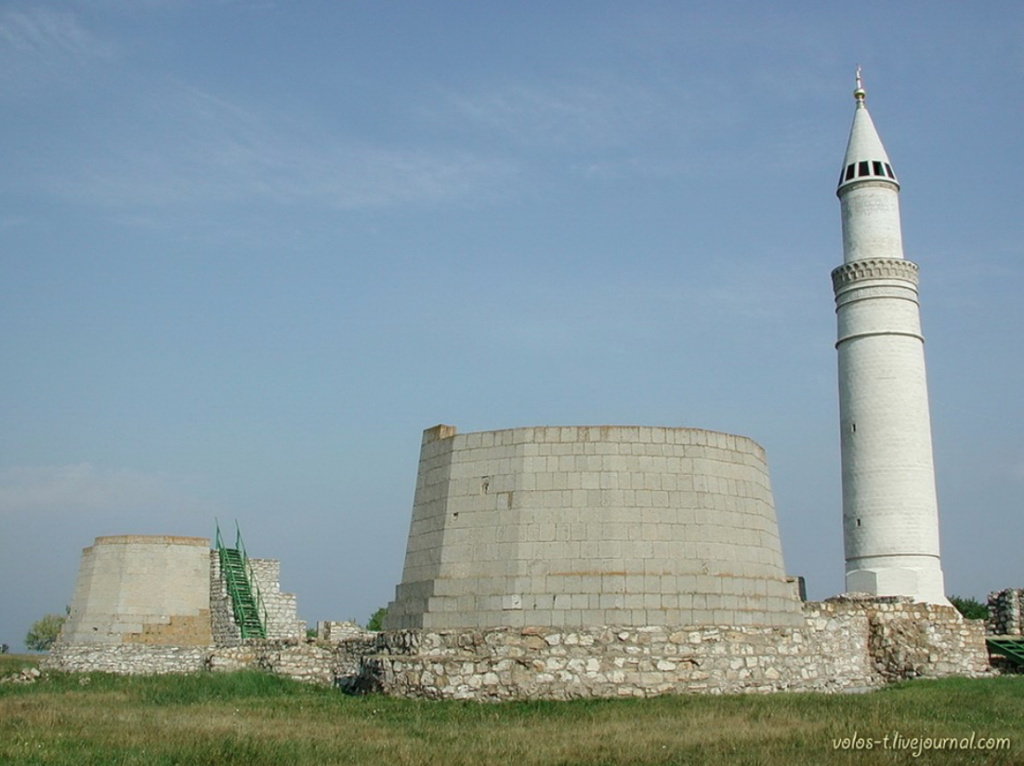Small minaret
October 13


The residential neighborhoods in the area of the Small Minaret and southeast of it are disappearing. This may have been a consequence of the 1361 campaign of the Golden Horde Khan Bulak-Timur. Here is a cemetery of nobility, from which several tombs and hills have been preserved, hiding the ruins of stone buildings. A dig was founded on one of such hills. The investigation revealed that it concealed the remains of a small mausoleum, whose foundation was preserved. The minaret is a massive 11-12 meter high pillar. The entrance is located on the northern side.
The small minaret plays a special role among the monuments of Oriental architecture (Azerbaijan, the Near East) close to it, being distinguished by peculiarities coming from the local architectural school, traditions of the pre-Mongol time. These peculiarities demonstrate the style of Bulgarian architecture – simplicity and constructiveness of volume-spatial solutions, moderation, and brevity of decorative decoration. They also show signs of the so-called Seljukism.
Legends say that the cemetery near the Small Minaret is called “Khan’s.” Stone tombstones were preserved over individual graves for a long time. The graves stretched in rows from north to south – most of the burials were made in boxes, over which small stone vaults were laid. In the second half of the XIV century a minaret was built here, which in contrast to the large one at the Cathedral Mosque was called Small, placed according to legends on the burial place of the “Holy Bulgars”. The minaret is an integral component of numerous surrounding burial vaults, cemetery, and memorial mosques.
The reference to the source: https://bulgar.pnzgu.ru/culture/architecture


